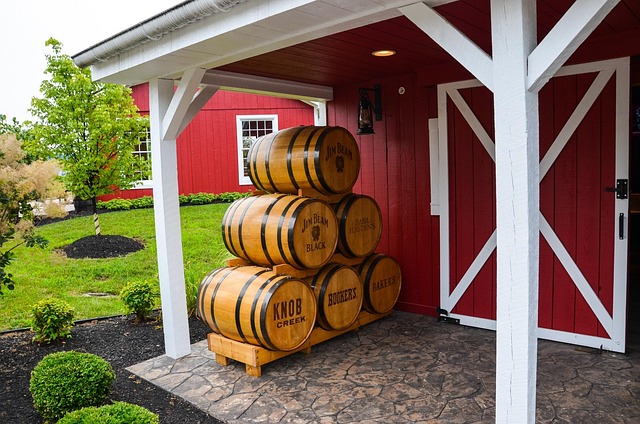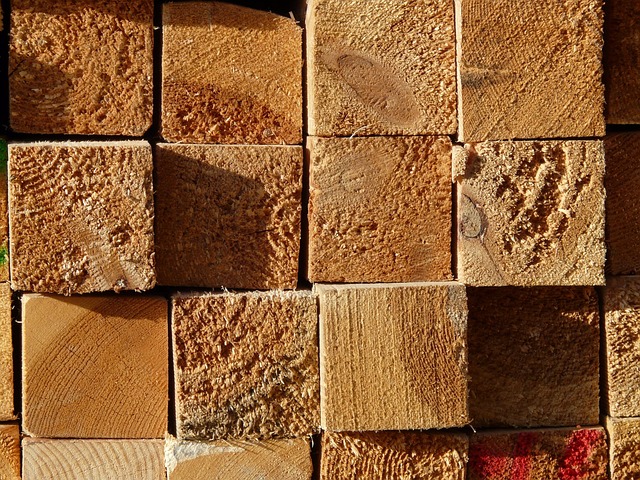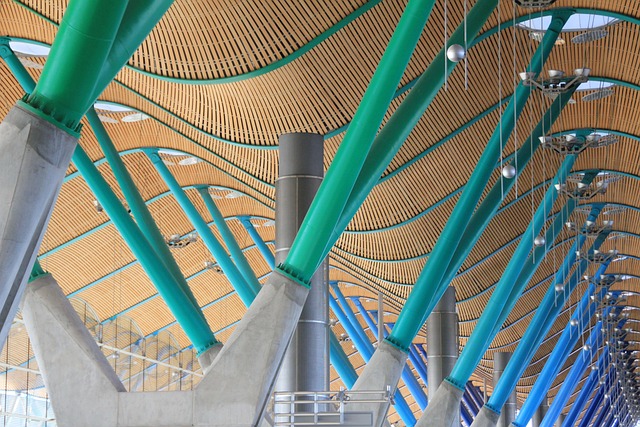Glue Laminated Beams: Cost-Effective & Versatile Construction Powerhouse

Glue Laminated Beams (GLBs) surpass Solid Wood Beams in strength and durability due to their lamination process, offering enhanced stability, longevit…….
In the realm of construction and engineering, the choice between structural elements is a critical decision that can significantly impact the durability, aesthetics, and cost-effectiveness of a building. Among these choices, glue laminated beams and solid wood beams have emerged as prominent options, each with its unique attributes and advantages. This article delves into the intricate world of these two beam types, exploring their definitions, global impact, economic implications, technological advancements, regulatory landscape, challenges, real-world applications, and future prospects. By the end, readers will gain a comprehensive understanding of the nuances that set glue laminated beams apart from solid wood beams.
Glue Laminated Beam: A glue laminated beam, often referred to as a glulam or glued laminate, is a structural element created by gluing together multiple layers of dimensional lumber (boards) at different angles. This process forms a composite material with superior strength and stiffness compared to individual boards. The core components include the lamina (layers of wood), adhesive, and a core material to prevent bowing if needed.
Solid Wood Beam: In contrast, a solid wood beam is crafted from a single piece of wood, typically sawn or milled from a tree trunk or log. It retains its natural form with no layers or bonding. Solid beams are known for their beauty, warmth, and unique grain patterns.
The concept of laminated wood structures dates back to ancient times when wooden boats were built using overlapping planks glued together. However, modern advancements in adhesive technology and manufacturing processes have revolutionized the production of glue laminated beams. These beams offer a practical solution for spanning long distances with minimal support, making them ideal for large-scale construction projects.
The use of solid wood beams has a rich history as well, being a traditional building material for centuries. They are celebrated for their aesthetic appeal and have been a cornerstone in architectural design, especially in residential and commercial buildings. Today, both glulam and solid wood beams contribute significantly to the modern construction industry, catering to diverse structural requirements.
The adoption of glue laminated beams has spread globally, driven by the increasing demand for sustainable and efficient construction practices. Regions with thriving timber industries, such as North America, Europe, and parts of Asia-Pacific, have become major producers and consumers of glulams. For example, Germany is renowned for its advanced glulam technology, while the United States has a robust market for both glulam and solid wood beams.
Solid wood beam applications are also widespread, with a significant presence in traditional construction hubs like Scandinavia, where they are deeply ingrained in architectural culture. As global design trends evolve, solid wood beams have found new life in modern architecture worldwide, often celebrated for their eco-friendly credentials and customizability.
The global market for glue laminated beams has experienced steady growth, driven by the increasing demand for lightweight yet strong structural components. According to a 2021 report by Market Research Future (MRFR), the global glulam market is projected to reach USD 5.7 billion by 2027, growing at a CAGR of 6.8% from 2020 to 2027. This growth can be attributed to factors like rising construction activities in developing economies and the push for sustainable building practices.
Solid wood beam markets have also seen upward trends, particularly in regions with strong forestry sectors. The European market, for instance, has a well-established tradition of solid wood beam usage, with a focus on high-end residential and commercial projects. In recent years, there has been a growing demand for custom-designed solid beams, reflecting the trend towards unique architectural features.
North America: The United States is a major consumer of both glulam and solid wood beams, with a preference for glulams in large-scale commercial and industrial projects due to their cost-effectiveness and ease of fabrication. Solid wood beams are popular in residential construction, especially in the western states, where there is an abundance of high-quality timber resources.
Europe: European countries have a long history of using solid wood beams, with various regional specialties in joinery and beam crafting. Today, glulam technology has gained significant traction, particularly in Germany and Austria, known for their advanced manufacturing capabilities. Solid wood beams remain prominent in traditional construction, while modern designs also incorporate them for aesthetic appeal.
Asia-Pacific: Countries like China, Japan, and Australia have emerging markets for glue laminated beams, driven by rapid urbanization and infrastructure development. Solid wood beam applications are more common in residential settings, with a growing interest in eco-friendly building practices. The region’s diverse timber resources contribute to the availability and variety of solid wood products.
The economic viability of glue laminated beams and solid wood beams is influenced by several factors, including material costs, manufacturing processes, and labor requirements. In general, glulams have a lower upfront cost due to efficient production methods and the use of readily available timber resources. This makes them attractive for large-scale projects where budget constraints are a primary concern.
Solid wood beams, while often more expensive per unit, offer long-term value through their durability and aesthetic appeal. Custom-designed solid beams, in particular, command premium prices in high-end construction markets. The economic impact of these beams is further amplified by the employment opportunities they create within local forestry and manufacturing sectors.
Both glulam and solid wood beam industries contribute significantly to national economies through:
The regulatory environment for glue laminated beams and solid wood beams varies across regions but generally aims to ensure structural integrity, environmental sustainability, and consumer protection:
Regulatory frameworks play a crucial role in shaping the market dynamics of these beam types:
Challenges: One challenge with glue laminated beams is their limited fire resistance compared to solid wood. Additionally, the bonding agents used in glulams can be sensitive to moisture changes, potentially leading to structural issues over time. Solid wood beams, while aesthetically superior, may not offer the same span capabilities as glulams and are susceptible to moisture-related damage if not properly treated.
Solutions: Researchers and manufacturers address these issues through:
Criticisms often center around the environmental impact of both beam types, particularly in terms of deforestation and carbon emissions:
Solid Wood: The concern is the potential overharvesting of forests for high-quality solid wood beams.
Glue Laminated: Critics argue that glulam production involves energy-intensive processes and can contribute to carbon footprint through transportation.
Strategies: To mitigate these issues, both industries embrace sustainable practices:
Case Study 1: The Grand Canyon Museum, USA
This iconic museum in Arizona showcases a stunning example of glue laminated beam usage. The structure features massive glulam beams spanning vast exhibition spaces, providing a visually striking framework for the museum’s exhibits. The project demonstrated the versatility and strength of glulams, allowing for open, column-free spaces that enhance visitor experiences.
Key Takeaways:
Case Study 2: The Stockholm City Library, Sweden
Solid wood beams are on full display in this award-winning library, where custom-designed, hand-crafted solid oak beams create a unique ambiance. The library’s design emphasizes natural materials, and the solid wood beams contribute to its warmth and character. This project highlights the potential of solid wood in modern architecture while maintaining structural integrity.
Lessons Learned:
The debate between glue laminated beams and solid wood beams is not merely about structural material but rather a reflection of the intricate interplay between technology, sustainability, aesthetics, and economics. As the construction industry continues to evolve, these beam types will remain indispensable, each offering distinct advantages in specific applications. By understanding their unique characteristics, challenges, and future prospects, professionals can make informed decisions that shape the built environment of tomorrow.
Q: Are glue laminated beams more durable than solid wood beams?
A: Durability depends on various factors, including species, treatment, and installation. Generally, solid wood beams have a longer service life due to their natural resistance to rot and pests. However, modern glulam technologies have significantly improved their durability, making them suitable for outdoor applications.
Q: Which beam type is more cost-effective?
A: Glue laminated beams often provide better value for money due to lower material costs and efficient production methods. Solid wood beams can be more expensive, especially for custom designs, but they offer long-term savings through reduced maintenance and their timeless aesthetic appeal.
Q: Can glue laminated beams withstand fire better than solid wood?
A: Traditional glulams may have limited fire resistance compared to solid wood. However, modern formulations and fire-resistant adhesives have improved their performance. Both types can be designed to meet specific fire safety requirements based on local building codes.
Q: How do environmental factors impact the choice between these beam types?
A: Environmental considerations are crucial. Solid wood beams from sustainably managed forests offer a greener alternative, while advanced glulam manufacturing techniques minimize waste and reduce carbon footprints. Both industries continuously strive for more sustainable practices to meet growing demand without damaging ecosystems.

Glue Laminated Beams (GLBs) surpass Solid Wood Beams in strength and durability due to their lamination process, offering enhanced stability, longevit…….

Glue laminated beams, engineered by bonding multiple wood layers, offer superior strength, durability, and consistent dimensions over traditional soli…….

Glue Laminated Beams (GLBs) surpass Solid Wood Beams in structural performance, offering superior strength, durability, and fire resistance due to adv…….

Glue Laminated Beams (GLBs) surpass Solid Wood Beams in strength and durability, offering lighter weight, greater design flexibility, cost-effectivene…….

Glue laminated beams offer enhanced strength and durability compared to solid wood beams, making them a cost-effective and environmentally friendly al…….

Understanding Glue Laminated Beams (GLB) vs Solid Wood Beams (SWB) is crucial for engineers & builders. GLB, created by bonding wood layers with a…….

Advanced adhesives in glue laminated beams offer superior strength and durability compared to solid wood, making them a cost-effective alternative for…….

Glue laminated beams, crafted from bonded wood layers, offer superior structural strength, flexibility, and longevity compared to solid wood beams. Th…….

Proper preparation is crucial for optimal adhesion and structural integrity in glue laminated surfaces. Compared to solid wood beams, laminated beams…….

This text compares Glue Laminated Beams (GLBs) and Solid Wood Beams in construction, highlighting structural integrity and cost differences. GLBs, eng…….